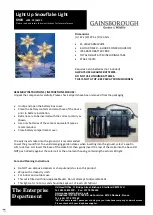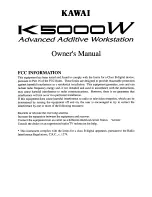
Sternfinder
1
Star Finder (Celestial Globe)
1
Indicateur d’étoiles
Bedienungsanleitung
1
Operating Instructions
1
Mode d’emploi
© 2012 FPM Holding GmbH
21
3.2 B
ASE
F
RAME
The base frame consists of the tripod (7) for supporting the globe and the
horizontal circle (9) representing the real horizon and is equipped with an
azimuth graduation (9a) and an hour graduation (9b) in clockwise direction.
The azimuth graduation has a scale interval of 1°, the hour graduation a
scaling of 10 minutes.
Classified into cardinal points,
0° = 0
h
represents the north,
90° = 6
h
represents the east,
180° = 12
h
represents the south, and
270° = 18
h
represents the west
on the graduations of the horizontal circle.
The vertical semicircle or altitude circle (10 – Fig.
3) is rotatably mounted on the horizontal circle, the
former also having a graduation from 0° to 90°.
For setting the geographic latitude
4
of the
observational place and/or the latitude of the
stellar body, a slidable pole holder (11 – Fig. 4) is
fixed on the vertical semicircle.
The spring-loaded centring pin of the pole holder
also serves as a star detector. Pole holder and
centring pin may be clamped by a knurled screw (12
and 13).
The globe rests polydimensionally rotatable at 3
points on a ball bearing (8).
Remark:
Because of the thickness of the locating pin (2 mm),
the altitude circle (10) is set on the horizontal circle
(9) with a distance of 1 mm from the dividing edge of
the altitude circle, and the data is read off the
horizontal circle with a star distance of 1 mm
above the upper edge of the horizontal circle.
Fig. 4 – Pole holder
Fig. 3 – Vertical Semicircle
















































